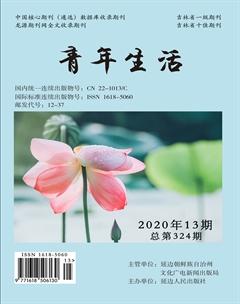On the Translation of Children’s Literature from the Perspective of Skopos Theory
刘桢
Abstract: Based on Skopos Theory, the two Chinese versions of The Little Prince are compared, and many examples are given to be analyzed on the different translation methods adopted in the two versions. From the perspective of Skopos Theory, the study compares the rationality of different translators methods to achieve their different translation purposes. Through the study, this paper draws the following conclusions. Childrens literature translators should keep the purpose of their translation in mind. According to the characteristics of childrens physical and mental development, Liu Mingjius translation which accords with the cognitive development level of childrens psychology is more suitable for children. Liu Mingjius translation is more vivid, interesting and easy to be understood. Skopos Theory is an effective way to analyze and solve practical translation problems.
Key words: childrens literature; The Little Prince; Skopos Theory; comparison
1.0 Introduction
Throughout the history of translation, we can find that good translations change with times and place. Whats more, in the course of language transmission, translations are oriented to another culture and other readers, so translations are judged by the target readers. Under the restriction of environment and research, there is no consensus on the definition of childrens literature in academic circles. But the audience of childrens literature is children, whose language is easy to be understood, vivid and interesting. (Myles Mcdowell 2008)
2.0 The Development of Skopos Theory
Skopos Theory is the basic theory of German functionalism. The vital concept is that the main factor determining the process of translation is the aim of the whole translation. In the theoretical framework of Skopos Theory, the audience is one of the most important factors which determines the purpose of translation - the recipients in the mind of the translator.(Tan Yesheng 2012) They have their own cultural background knowledge and the expectation of the translation. Translation is the text produced for a purpose and for the target audience in the target language situation.
3.0 The Characteristics of Childrens Literature
Not only does the creator of childrens literature need to consider the particularity of the audience, but also the translator of childrens literature needs to be familiar with the characteristics of childrens literature. In the process of translation, translators should place target readers in the center and keep in mind the purpose of translation.
4.0 A Comparison between the Two Translations of The Little Prince
From the perspective of Skopos Theory, the two Chinese versions of The Little Prince are compared and analyzed. The Little Prince is a classic childrens literature that worthy of study. The novel tells a meaningful moving story. Children and adults are their readers. Children can easily enjoy the imaginative fun; adults can appreciate the deep meaning of the story, such as the social phenomenon and the kind of people, the human sense of responsibility, and so on. If a translator can tell stories in a childs voice and express childrens thoughts and feelings and corresponding linguistic features, it will be more capable of reflecting the artistry of translation.
Zhou Kexi translates “tiny” correctly, but Liu Mingjiu correctly translates it with a metaphor: “小得像粒弹丸”. The metaphor can mobilize the rich imagination of children. Children know how big the projectile is, especially the boy who loves toy guns. So Liu Mingjius translation let children know how small the kings planet is through specific things.
In this example, Zhou Kexis translates “put them one on top of the other” into “叠罗汉” with Chinese traditional cultural meaning, while the translation of Liu Mingjius is more easily to be understood and accepted by the special group of children, which conforms to Chinese children. The habit of thinking, cultural background and oral expression reflect the coherence rule in Skopos Theory.
5.0 Conclusion
Although the author of The Little Prince only spent 3 months to finish the fairy tale, it has a profound creation background. It is the accumulation of life and several even decades of years emotion of the author. It is not only a fairy tale for children, but also a “crystallization” of philosophy and thinking, which is full of insights into life.
The two translators, Liu Mingjiu and Zhou Kexi choose different translation strategies according to their different purposes, but in the process of translation, they all observe the three principles of the Skopos Theory which is created by Vermeer: skopos rule, coherence rule and fidelity rule.
In translation, it is necessary to take the needs of the target readers language habits and characteristics into account, and meet the needs in the maximum extent. To sum up, translation guided by Skopos Theory can help translators to make whole book fluent and correct. We can guide the translation of childrens literary works from the perspective of Skopos Theory. And in the process of translation, some language features should be taken into consideration.
References:
[1]Myles, M. 2008. Fiction for Children and Adults: Some Es-sential Differences [M]. London: Routledge.
[2]譚业升(Tan Yesheng),2012,《认知翻译学探索:创造性翻译的认知途径和认知制约》[M]。上海:上海外语教育出版社。
[3]柳鸣九(Liu, Mingjiu),2007,《小王子》[M]。长沙:少年儿童出版社。
[4]周克希(Zhou, Kexi),2009,《小王子》[M]。上海:上海译文出版社

